On January 27, 2015 thousands will gather before the gates of Auschwitz-Birkenau Extermination Camp to commemorate the 70th anniversary of its liberation by the Red Army. Beyond those gates are where approximately 960,000 million Jews and another 125,000 including Poles, Roma, ("Gypsies"), homosexuals and the infirm, were put to death.
In 2013 I had the opportunity to visit the site and stand before those gates as part of a Holocaust In Europe tour led by U of W history professor Dr. Jody Perrun.
"Auschwitz" was actually a series camps in close proximity about 70 kilometres west of Krakow, Poland. Its name is a variation of that of the nearby town of Oświęcim. The three main camps were Auschwitz I, Auschwitz-Birkenau (Auschwitz II) and Auschwitz-Monowitz (Auschwitz III). There were another 48 sub camps that dotted the countryside around them.
The best preserved of the sites, and the one with the infamous "Arbeit macht frei" ("Work will set you free") gate at the entrance, is Auchwitz I, built in 1940 as a concentration camp. For the most part, it was the processing and administration centre for the camps. People were warehoused here while their fates were determined.
Auschwitz-Monowitz, built in 1942, was a work camp filled with warehouses and factories employing prisoner labour. It was bombed near the end of the war, then dismantled and is now home to modern factories.
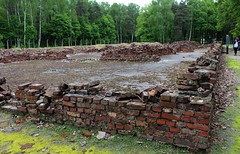
Top to bottom: Main entrance, destroyed gas chamber, bunkhouse.
The true horrors of Auschwitz took place at Auschwitz-Birkenau located just kilometres from Auchwitz I, connected by a road and rail line. Built in 1941, it is where the majority of Auschwitz's victims were killed.
Prisoners were kept in basic bunkhouses, a number of which are still standing, as are many of the administrative buildings. In the dying days of the war the Germans blew up the most incriminating buildings, such as the furnaces and gas chambers, leaving behind mostly rubble and tonnes of ash.
Another part of the camp destroyed was a compound called as Kanada (Canada). Named for Canada, known as a land of riches, it was where prisoners were deloused in "saunas" and separated from their possessions, everything from clothing and jewellery to hair and gold teeth. The remainder of the Canada complex were the warehouses where these items were sorted and stored for reuse.
Another part of the camp destroyed was a compound called as Kanada (Canada). Named for Canada, known as a land of riches, it was where prisoners were deloused in "saunas" and separated from their possessions, everything from clothing and jewellery to hair and gold teeth. The remainder of the Canada complex were the warehouses where these items were sorted and stored for reuse.
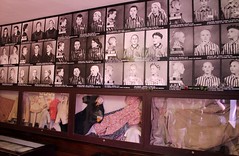
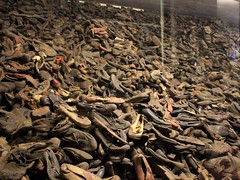

This will be the last major anniversary of the liberation where a significant number of survivors will be able to attend. As they pass on, the question arises about what to do with the Auschwitz sites?
In the decades since the war, tens of millions of people have made the pilgrimage to their gates and they are a major tourism draw for Poland. The buildings, however, are starting to crumble.
Up until the turn of the century, the museum that runs the site was able to maintain it, the exhibitions and the thousands of artifacts housed within there from gate admissions and other on-site sales. A survey of its nearly 200 acres which contains about 150 buildings and 130 ruins found most of them in poor condition and in need of major renovations.
A call went out for international aid to raise the approximately $130m U.S. needed for the restoration. Germany responded with $80 million, the U.S.A. with with $15 and Australia with $6 which allowed for some desperately needed work to be done.
As someone who has visited the site and generally in favour of building preservation, I have to admit that I can see merits in both sides of the debate.
That, though, will be a discussion that will be picked up another time. Today is a day to remember the victims and survivors of one of the modern world's darkest chapters.
Auschwitz Information:
Auschwitz-Birkenau homepage
Auschwitz Site U.S. Holocaust Museum
The History of Auschwitz PBS.org
The preservation debate:
Auschwitz's historic grounds falling into disrepair National Post (2013)
Can Auschwitz be saved? The Smithsonian (2010)
Should Auschwitz be allowed to decay? BBC News (2009)
Auschwitz Repairs Stir Up Tough Preservation Debate Wall Street Journal (2002)












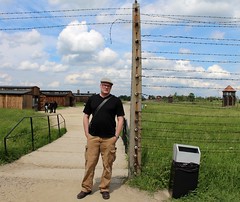
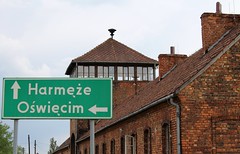
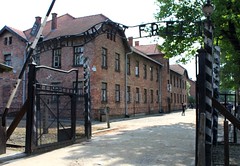
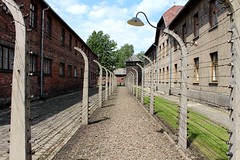
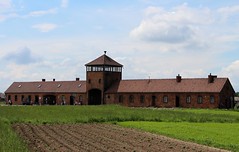
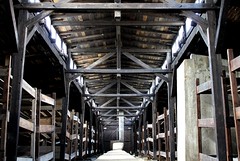
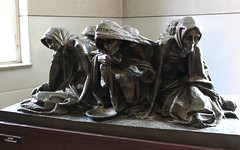
No comments:
Post a Comment